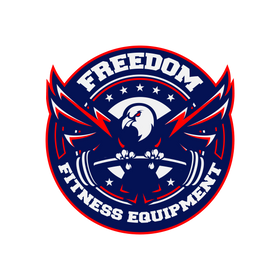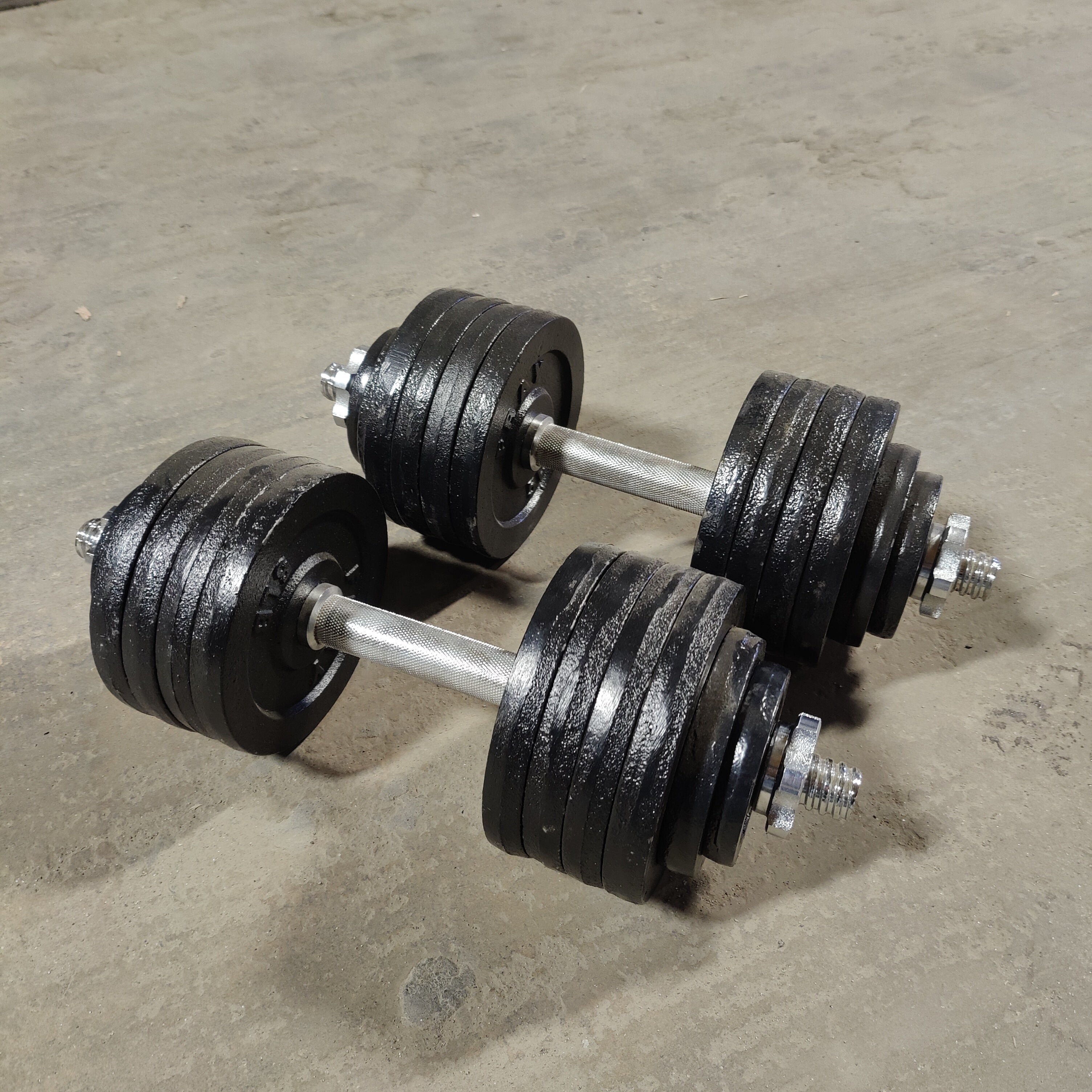Gymtimidation is real, but I want to help you feel a little more confident after you are done reading this article.
The gym is a place where all people can go to improve their health, fitness, and body image regardless of where you currently are now. The truth is whether you have never touched a weight before or are a professional bodybuilder, everyone has areas they want to improve - after all, that’s why they are at the gym!
So, if you have found yourself walking into a gym, not sure what to do next - you probably did one of two things. Either you went to the cardio section and hopped on a treadmill or bike or you went to some machines and picked ones that looked easy enough to use.
I want you to know this is a great start, after all just showing up sometimes is the hardest part of improving our health and fitness.

There is absolutely nothing wrong with doing cardio and using weight machines and you can absolutely get a great workout from both ways of training. However, if the reason you avoid the free weight section is just because you aren’t sure what to do or are worried about what other people may think - I want to help you. That is the purpose of this article - to make the gym less intimidating and unlock a whole new world for you in the free weight section.
Now if you are especially new to the gym, you may be unfamiliar with the term “free weights” so before we talk about how to use them, let’s first look at what they are.
What are Free Weights?

One of the easiest ways to define free weights is to talk about what they aren’t. When you walk into a gym like Planet Fitness, O2 Fitness, Gold’s Gym, etc, the gym is roughly divided into three main parts.
The first is the cardio section.

This is where gains go to die - somewhat kidding. Cardio is very important for your overall health; however, it won’t necessarrily help you gain muscle. Here you will find treadmills, rowers, stair climbers, bikes, ellipticals, and other cardio machines.
The second section is the weight machine section.

This section is where you will see ten to thirty-plus weight machines. Most of these machines will have a weight stack on them - basically individual metal rectangle plates with a pin so you can choose how much resistance you want on any given machine. However, you may also find some machines that allow you to load up weight plates instead. Some common machines you will find here include the leg press machine, chest press machine, and leg extension machine.
The final section is the free weights section.

In this section, you will probably find a large dumbbell rack, squat racks, bench press stations, kettlebells, and lots and lots of mirrors. Depending on the gym, this section could be 80% of the gym or 20%. Some gyms have almost no free weight section, whereas other gyms center their offering on free weights.

For example, a gym like Planet Fitness is geared more toward weight machines and cardio machines. They have some free weights - primarily dumbbells, however, they don’t have any free-weight barbells. On the other hand, a gym like Lifetime Fitness is going to have a much larger free weight section even including things like an Olympic lifting platform and sleds.
Free weights are essentially weights “free” of any machine.
They can move unattached to anything else and are completely up to the individual to move how they desire.
If you aren’t currently a member at a gym, this is something worth considering. Be sure to try out a few different types of gyms and see which style of training you prefer. Different gyms tend to attract different types of people and training styles.
So, in short, free weights are made up mostly of kettlebells, dumbbells, barbells, and weight plates.
Let’s take a look at each one of these.
Kettlebells

This is the first type we are going to look at, and of all the free weights you may be most unfamiliar with this one. Kettlebells certainly have some good uses but aren’t nearly as common as dumbbells or barbells and weight plates. But, who knows that could change.
Kettlebells are typically black and made of cast iron. The bulk of the weight is found in the sphere-looking “bell” at the bottom. Attached to this bell is a U-shaped handle. It is somewhat of an odd-shaped implement, but the unique shape gives it the ability to perform some exercises that can’t be done with a dumbbell (or at least done as well).
Because of their unique shape, kettlebells are great for swinging.

Kettlebell swings might be the most popular exercise done with a kettlebell. Basically, you grab the handle with both hands and hinge at your hips swinging the kettlebell through your legs. You then extend your hips with power and this causes the kettlebell to swing or elevate to about shoulder height (or even overhead).
Kettlebells are fun to use. In my opinion, apart from swings, they don’t have a ton to offer that a dumbbell can’t do just as well or better. However, if your gym has them and you prefer the feel of a kettlebell to a dumbbell they can often be interchanged pretty easily.
Most kettlebells are very similar. There are minor variations in handle diameter and exterior finish, but overall not a ton of differences among kettlebells. Typically, kettlebells come in weights ranging from 30 to 75 lbs. but there are kettlebells that are much, much heavier as well as lighter. They aren’t as common, but you can find adjustable kettlebells. These can be nice for a home gym, however, you probably won’t find adjustable weights at a commercial gym. I'd also recommend adjustable dumbbells before buying adjustable kettlebells for your garage gym.
Dumbbells
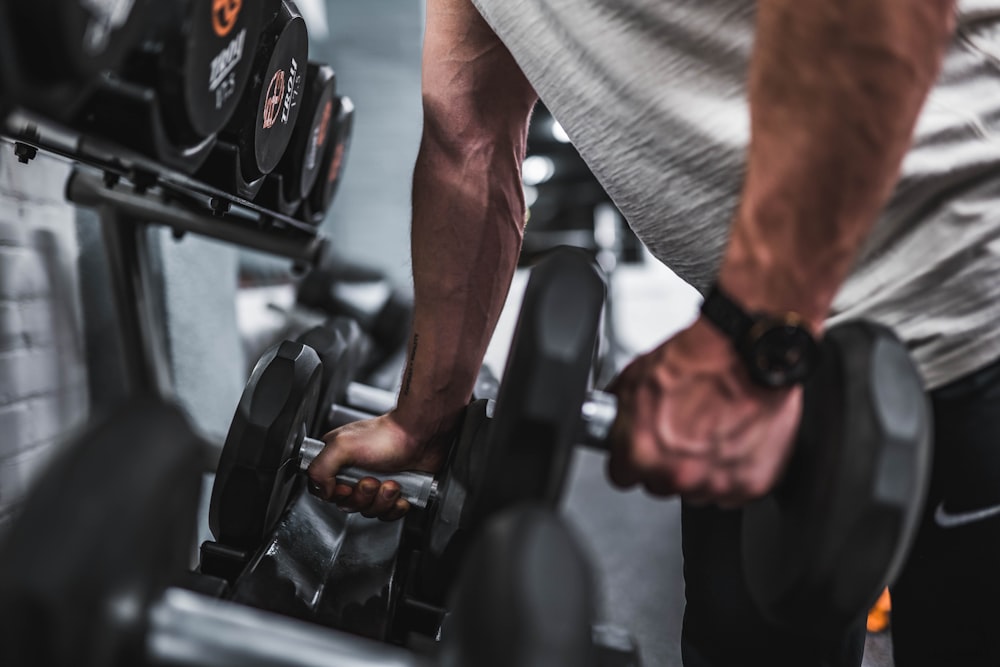
While you may have a harder time finding kettlebells at a commercial gym, you should have zero issues finding dumbbells.
Dumbbells are arguably the most common and used type of free weight.
This is probably because of how accessible they are. You can find dumbbells as light as one pound all the way up to hundreds of pounds. Although, at your average gym, you are probably looking at weights ranging from 5 to 90 lbs. Dumbbells typically come in weight increments of five pounds.
With kettlebells we talked about how the weight is in the bottom in the bell, making them quite bottom-heavy. This is one of the biggest differences between kettlebells and dumbbells as dumbbells are loaded on each end with a handle connecting the two loads.
Anyone can use dumbbells, and they can be one of the best places to start when you begin to use free weights.
Dumbbells tend to have a quicker learning curve than kettlebells and even barbells and weight plates. They are also easy to stop using. What I mean by this is with an exercise like lunges, if you reach a point where you can no longer perform any more lunges, simply set the dumbbells down. This is great for anyone new to lifting and great for safety overall.
We will look more closely at specific dumbbell exercises and techniques later on, but you can perform almost anything your heart desires with dumbbells - squats, bench press, curls, lunges, and so much more.

There are quite a few different types of dumbbells you may find. At a typical gym, as mentioned above you will find a large dumbbell rack. These dumbbells may be cast iron, but more than likely they will be some sort of rubber-coated dumbbells. There are tons of subtle differences like the shape of the dumbbell, handle diameter, etc. but at the end of the day, they all function pretty much the same. Adjustable dumbbells are much more common than adjustable kettlebells, but you will still probably not find them at a commercial gym.

However, adjustable dumbbells can be a really good option for your garage gym as they allow you to save space and money - win, win! Basically, adjustable dumbbells allow you to either manually add small weight plates to a dumbbell handle - similar to a barbell - or you can turn a knob or adjust a pin changing the weight of the dumbbell. Finding the best adjustable dumbbells for your garage gym can be a true game changer.
Barbells and Weight Plates
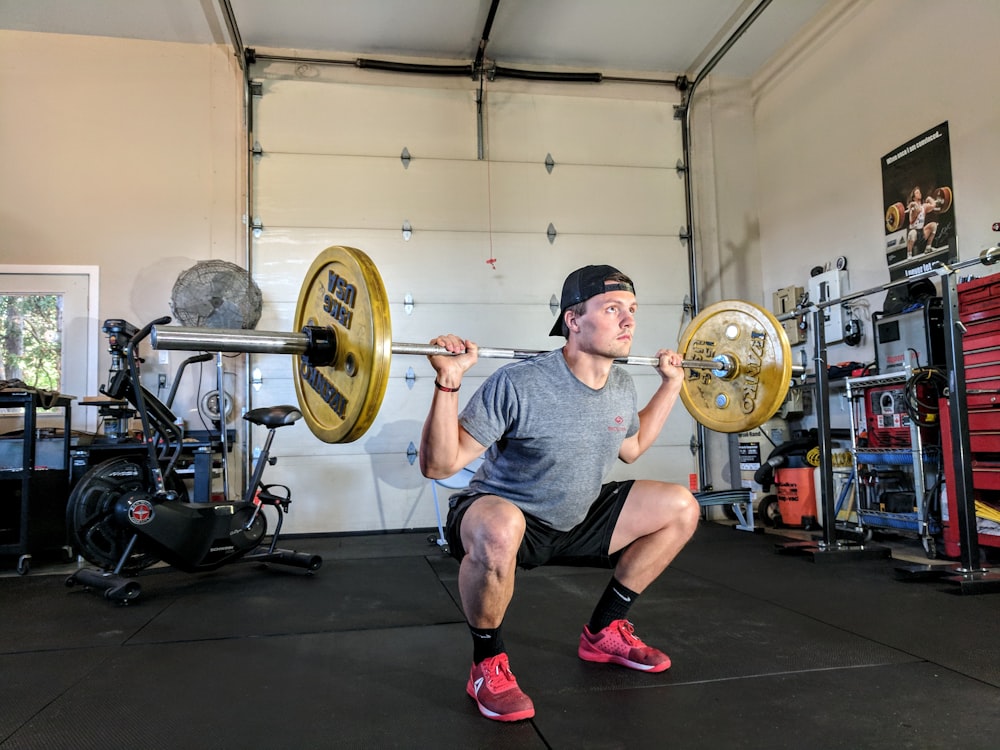
This combo is the king of the free weights. While often seen as the most complex and intimidating, it is well worth taking the leap and spending the time to learn how to use a barbell with weight plates.
What makes barbells and plates so great is the ability to load considerably more weight than you could otherwise with kettlebells or dumbbells.
Barbells are the most effective, efficient method for moving the most weight well.
One of the principles of building strength and gaining muscle mass is challenging your muscles with weights that continue to get heavier over time. You can certainly do this with machines, kettlebells, and dumbbells, but barbells and weight plates are arguably the best way. You are also going to be able to lift heavier weights with a barbell, for instance, you will be able to squat considerably more with a barbell on your back than you would holding a kettlebell in what we would call a goblet position (i.e. both hands on the kettlebell, pinned against your upper chest).
All barbells and weight plates function pretty much the same. Grab a barbell and be sure to warm up the movement you are going to perform with just the bar. You then can add plates to the end of each side of the barbell to reach the desired weight for your exercise. Be sure to add clips as well.
If you’ve ever seen someone back squatting or bench pressing you are familiar with barbells and plates; however, this is just the tip of the iceberg. There are quite literally hundreds of exercises you can perform here - from snatches and shoulder presses to Romanian deadlifts and barbell bent over rows. Don’t worry we’ll talk about some of these movements soon.
Anyone and everyone can use barbells and weight plates.

The barbell is incredibly scalable. Here’s what I mean, let’s look at two people - the first a professional football player and the second a grandma new to lifting weights. Now, just imagine these two individuals standing next to each other. One is jacked, muscles everywhere, and in peak physical shape, and the other is a professional football player. Just kidding, although, there are some incredibly strong and fit grandmas. But the two individuals could not be more different.
However, let’s say both walk into the gym to perform five sets of five repetitions on a deadlift. For the professional football player - he will likely be performing his sets at 400+ lbs. On the other hand, grandma may warm up with a PVC pipe and perform her sets with a barbell and 10 lbs on each side of the bar (55 lbs). Although their weights are worlds apart, both grandma and the professional football player got a great workout, and both will feel their hamstrings, glutes, and back muscles working hard. This is what I mean by scalable.
The gym - and free weights - really are for everyone.

When it comes to types of barbells and weight plates - there are a ton. There are entire articles dedicated to different types of plates, so we won’t fully dive into that, but I will briefly touch on a high-level overview of what you could find in a commercial gym. As far as barbells, you will most likely just find a standard multipurpose barbell, but this varies considerably depending on the gym you go to.
Again, a gym like Planet Fitness will not have a free-weight barbell - instead, you will see a barbell in a Smith machine, which basically attaches a barbell to a fixed plane of motion. It’s not a terrible machine and can be beneficial in some instances, but in general, a free-weight barbell is better. On the other hand, you may find Olympic barbells at other gyms. These barbells are designed to be used in exercises like clean and jerks and snatches.
As far as plates, you will probably find some rubber-coated metal plates or cast iron plates in the squat rack and bench press areas. However, bumper plates - plates designed to be able to be dropped and originally designed for Olympic lifting - are becoming more and more popular.
Okay, now that you have a better idea of what free weights are, let’s look at some benefits of using free weights.
Why Use Free Weights?
There are a couple of major benefits of free weights and depending on your goals with lifting weights, one may be more appealing to you than the other - although both are quite important.
First, free weights most closely mimic real life.

Think about it, when you go to pick up groceries from the floor, hold your child, or take the garbage out are any of these things attached to a machine? Obviously, the answer is no.
This is a pretty big benefit to using free weights - it simply prepares you for everyday life.
One of the biggest benefits of exercise is its ability to help you live a fully physically functional life for as long as possible. We may not consider this all that often, especially when we are young, but lifting weights is the best way to ensure you are able to continue to perform everyday tasks for as long as possible. Now you certainly could get similar benefits, as there would be some carryover, from using weight machines. The biggest thing you would be missing is the benefit of strengthening what we are called the stabilizing muscles. Because free weights require your body to be the sole mover of the weight, you bear the full weight. This means your body must not only lift the weight but control it throughout the movement - just as you would in everyday life.
Second, free weights are a better way to build muscle and strength.
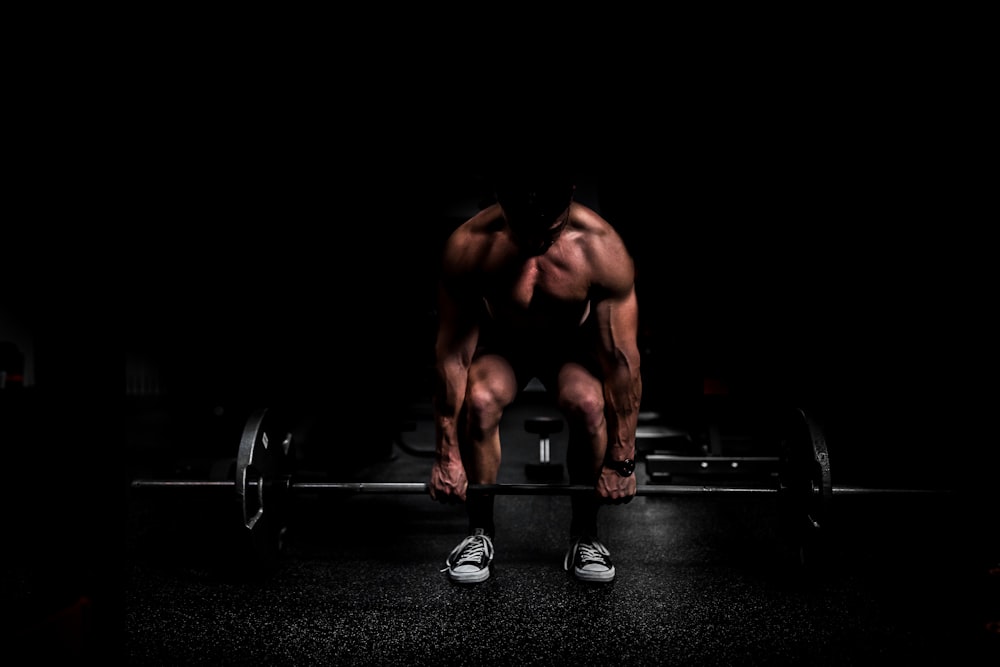
Just consider any video you may have seen of the top athletes or lifters in the world - while machines are used some, the bulk of exercises are performed with free weights. For athletes, this is partly because sports occur in all planes of motion and space so training should reflect that. For both athletes and bodybuilders, it is also because free weights are better for increasing strength and muscle. As we talked about earlier, you can lift heavier weights with free weights - and lifting more weight (safely of course) is a great way to build strength and muscle mass. Of course, you can build muscle and strength with machines, but it is not quite as effective and doesn’t translate to athletics as well.
Free weights are certainly superior to weight machines; however, this doesn’t mean there aren’t benefits to machines or that you can’t get a great workout with machines. Let’s look at some of those benefits.
Reasons Not to Use Free Weights
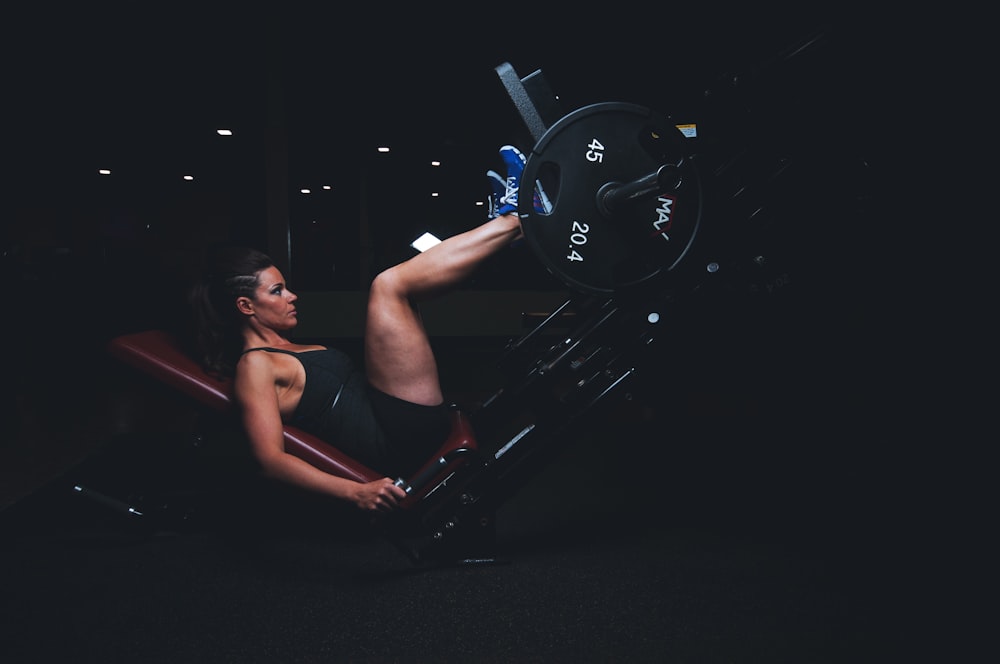
There are none.
Just kidding. The list is certainly short, and I would argue everyone should use free weights in some shape or fashion.
However, there are some situations where using machines is just as good or maybe even better.
Machines are great for an isolation pump. What does that mean exactly? Machines are designed to move in one predetermined pattern, meaning no matter how hard you try you can’t make a vertical chest press machine function as a shoulder press machine - it’s simply not designed to move up and down but instead forward and back.
This is one reason bodybuilders tend to like using machines to fully exhaust a muscle group. Because you don’t have to use stabilizing muscles as you would with free weights, you can focus solely on contracting the muscle you want without the fear of dropping dumbbells or a barbell.
Machines can also be good for anyone new to lifting.
Machines aren’t as intimidating and are easy to learn. The most important thing about going to the gym is going to the gym. Building that consistent habit and doing something is better than showing up one time and doing free weights.
However, with some research or a watchful experienced eye of a friend or coach you can perform free weight exercises well and get the greatest benefit.
How to Use Free Weights?

Okay, whew. We’ve covered a lot. Finally, let’s talk about how to use free weights and some general tips and guidelines to set you up for success.
Common Exercises

As you begin your free weight journey, you may not be sure where to start. There are hundreds if not thousands of types of free weight exercises. While I certainly won’t cover all of them - nor should anyone try - let’s look at some of the most important exercises categorized by type.
-
Push

This is exactly what it sounds like.
These exercises require you to push something away from you - common examples are the shoulder press and bench press - two kings of upper body exercises.
It is probably best to use either dumbbells or a barbell for these presses rather than a kettlebell. With bench press, you are primarily using your chest and triceps, and with shoulder press, your shoulders and triceps. For both exercises, a shoulder-width grip or maybe a little wider is a great place to start.
-
Pull
Pull exercises are going to work the opposite muscles of push. Pull exercises include things like rows and pull-ups. You should feel your biceps, lats, and back muscles when pulling. When talking about rows, we mean pulling either a barbell, dumbbell, or kettlebell to you. There are a ton of variations with these including bent-over rows, single-arm rows, landmine rows, and many others.
-
Hinge

Hinging targets your glutes and hamstrings. It involves bending at the hips and using your posterior muscles to stand straight again.
The two most common exercises here are deadlifts and Romanian deadlifts.
With both, you want to start with your feet about shoulder-width apart, keep your core tight, and really drive through your legs resisting using your back to pull the weight.
-
Squat
You are probably familiar with this one. Whether you use dumbbells, kettlebells, or a barbell, squatting is incredibly important. Squat variations include the front squat, back squat, single-leg split squat, and many others.
Squats target your quads, glutes, and hamstrings and are arguably the most effective exercise you can do.
A good starting spot for a squatting stance is to set your feet a little wider than hip-width apart and slightly turn your toes out. With an upright chest, begin lowering yourself down and then push through your legs to stand up again.
Be sure to watch videos online or reach out to an experienced friend or coach to get help in performing these exercises correctly. These are just some high-level tips.
Start Light

After reading this article, I know you are going to be jacked up to go lift all the weight in the gym. And of course, I know you could, and I want you to hit all kinds of personal records, but please, please start light - pick up the lighter dumbbells and settle in for the long run.
One of the easiest ways to ensure you never progress in your fitness goals is to go too hard in the beginning and hurt yourself. Our bodies adapt best over time, so take it slow and add weight only once your technique is good and you are feeling confident.
Technique, Technique, Technique

Technique is so important. You may have seen that guy at the gym who loads up way too much weight on a squat or bench press only to do a quarter of a rep. This is known as ego lifting, and it does not help you in the short or long term. You really want to build your lifting foundation on good technique. It may feel slow in the beginning, but your body will be thanking you in the long run.
Not only will you be more likely to avoid injuries, you will be in a better long-term position to add strength and build muscle.
Lifting with someone with more experience than you is a good way to do this or you can record your lifts and compare them to videos online of good technique.
Track Your Progress
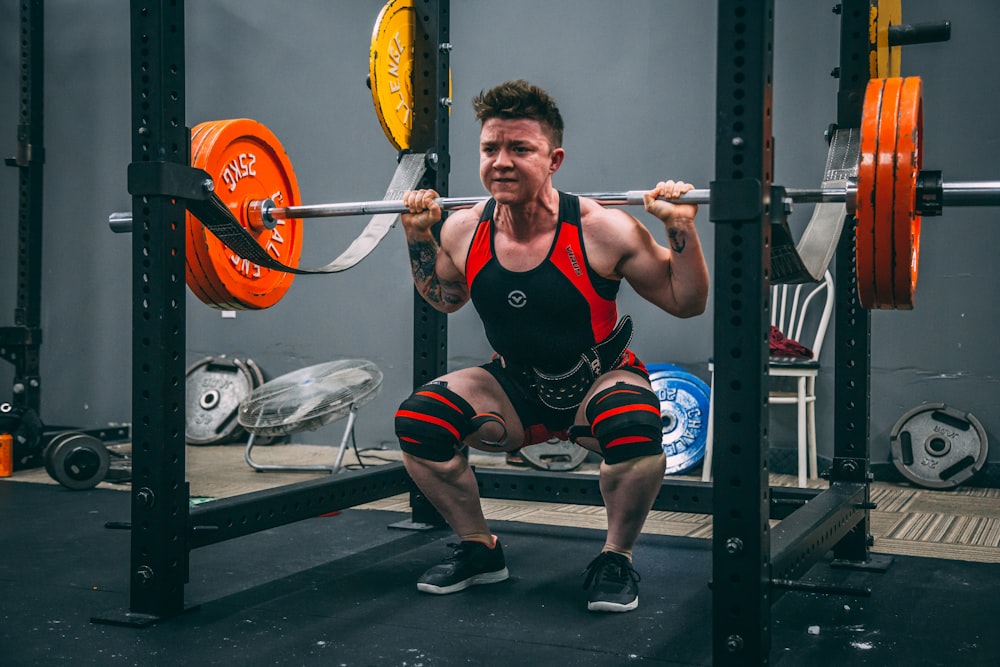
Not tracking your progress is another way to stall your progress at the gym. It is important to have a plan. A great way to do this is by writing down the exercises you perform and the sets, reps, and weights for each one. Then the next week add 5 lbs - the key is to add small weight increments over time. Assuming you are prioritizing good technique, keep doing this week after week and you will see great progress. Eventually, you will have to make a change because you won’t be able to keep adding 5 lbs, so making sure you have a well-thought-out plan is another good idea to maximize your time at the gym. You can find a lot of great strength training exercises and plans online.
Safety Tips

Safety is incredibly important when lifting weights. There are a few things that are important to do safety-wise when lifting. First, use safety clips. Safety clips go on the end of a barbell and ensure the weight plates don’t slide off. Second, make sure you have a spotter. A spotter is someone to help you if you fail a rep. Spotters are especially important for squats and bench presses, while exercises like deadlifts and Olympic lifts do not need a spotter.
Finally, be aware of the people around you. Oftentimes, they may not see you while they are lifting so be sure to keep an appropriate amount of space in order to ensure their safety and yours.
Free weights are incredible for building strength and muscle, improving overall health and fitness, and ensuring a better quality of life. Hopefully, you feel more confident and that gymtimidation isn’t hitting you quite as hard!
